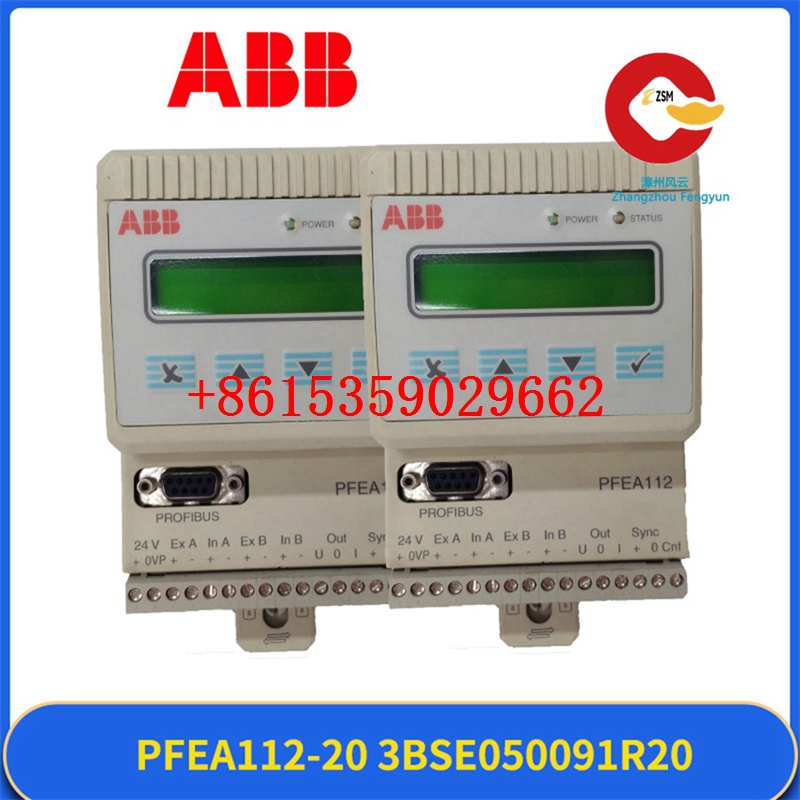Technical Parameters Introduction of ABB 1KHL015545R0001 30032283/0033 04LE

1. General Information
The ABB 1KHL015545R0001 30032283/0033 04LE is a specialized component or device designed for industrial applications. It is part of ABB’s extensive range of high – quality electrical and automation products, known for their reliability, performance, and advanced technology.
2. Electrical Parameters
- Voltage Rating: This device is engineered to operate within a specific voltage range. While the exact values may vary depending on the specific application and configuration, it is typically designed to handle standard industrial voltages. For example, it could be suitable for operation in systems with nominal voltages such as 400V, 415V, or other common industrial levels, ensuring compatibility with a wide range of power distribution and control systems.
- Current Rating: It has a defined current – carrying capacity. The device can safely handle a certain amount of electrical current without overheating or experiencing performance degradation. The current rating is crucial for selecting the appropriate device for a particular load. For instance, it might be rated for currents ranging from a few amperes up to several hundred amperes, depending on the model and intended use.
- Power Rating: Based on the voltage and current ratings, the device has an associated power rating. This indicates the maximum amount of electrical power it can process or handle during normal operation. It is an important parameter for system designers to ensure that the device can meet the power requirements of the connected loads.
3. Mechanical Parameters
- Dimensions: The 1KHL015545R0001 30032283/0033 04LE has specific physical dimensions, including length, width, and height. These dimensions are important for installation purposes, as they determine the space required for mounting the device in a control panel, enclosure, or other installation locations. Accurate knowledge of the dimensions helps in proper layout planning and ensures that there is sufficient clearance around the device for ventilation and maintenance.
- Weight: The weight of the device is another mechanical parameter. It is relevant for transportation, handling during installation, and the structural design of the supporting structures. For example, in a large – scale industrial installation, the cumulative weight of multiple devices needs to be considered when designing the mounting racks or panels.
- Mounting Type: It is designed for a specific mounting method, such as DIN rail mounting, panel mounting, or chassis mounting. The mounting type affects the ease of installation and integration into the overall system. DIN rail mounting, for instance, is a popular choice in control cabinets as it allows for quick and secure installation of multiple devices in a standardized manner.
4. Environmental Parameters
- Operating Temperature Range: The device can operate effectively within a specified temperature range. It is designed to withstand the typical temperature variations encountered in industrial environments. For example, it may have an operating temperature range of -20°C to +60°C, ensuring reliable performance in both cold and hot conditions. However, extreme temperatures outside this range may affect the device’s performance and lifespan.
- Humidity Resistance: It has a certain level of resistance to humidity. Industrial environments can often be humid, and the device is built to prevent moisture – related issues such as corrosion, short – circuits, or malfunctions. The humidity resistance is usually specified in terms of relative humidity (RH), and the device may be rated to operate safely in environments with relative humidity levels up to a certain percentage, such as 95% non – condensing.
- Altitude Rating: The device’s performance is also affected by altitude. It has a specified altitude rating, indicating the maximum height above sea level at which it can operate within its specified performance parameters. At higher altitudes, the air density decreases, which can affect the device’s cooling capabilities. The altitude rating ensures that the device can function properly in installations at different elevations.
5. Protection Features
- Overload Protection: The 1KHL015545R0001 30032283/0033 04LE is equipped with overload protection mechanisms. These mechanisms detect excessive current flow through the device and take appropriate action, such as tripping a circuit breaker or activating an alarm, to prevent damage to the device and the connected loads. Overload protection is essential for ensuring the safety and reliability of the electrical system.
- Short – Circuit Protection: It also provides short – circuit protection. In the event of a short – circuit, which is a sudden and severe increase in current flow, the device can quickly interrupt the circuit to prevent damage to the electrical components and reduce the risk of fire or other hazards. Short – circuit protection is a critical safety feature in industrial electrical systems.
- Other Protective Functions: Depending on the specific design, the device may have additional protective functions, such as over – voltage protection, under – voltage protection, and phase loss protection. These features further enhance the device’s ability to operate safely and reliably in various industrial conditions.
6. Communication and Control Parameters (if applicable)
- Communication Protocols: If the device is part of a larger automation or control system, it may support specific communication protocols. For example, it could be compatible with protocols such as Modbus, Profibus, or Ethernet/IP, allowing it to communicate with other devices, programmable logic controllers (PLCs), or supervisory control and data acquisition (SCADA) systems. This enables centralized monitoring, control, and data exchange within the industrial network.
- Control Inputs/Outputs: It may have defined control inputs and outputs. Control inputs can be used to receive signals from external devices or sensors, such as start/stop commands, status signals, or analog setpoints. Control outputs, on the other hand, can be used to send signals to other devices, such as actuators, relays, or indicators, based on the device’s internal logic or the received input signals.
In summary, the ABB 1KHL015545R0001 30032283/0033 04LE is a well – engineered device with a set of technical parameters that define its electrical, mechanical, environmental, protection, and communication (if applicable) capabilities. These parameters are essential for selecting, installing, and operating the device in industrial applications to ensure optimal performance, safety, and reliability.


